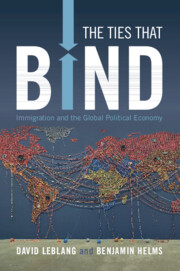6 - Destination Statecraft
Labor Market Policy and the Regulation of Migration
Published online by Cambridge University Press: 02 February 2023
Summary
It is no secret that migrant destination countries have become increasingly interested in regulating migrant inflows. We discuss in this chapter some potential tools of migration management suggested by other scholars – notably, border restrictions and fortification, foreign aid, and bilateral trade agreements. We turn the conversation toward a different area of policy: labor market access. We argue that migrant-receiving countries interested in regulating migration can do so by creating temporary labor market access for people from sending countries. Allowing some migrants formal employment opportunities significantly increases the amount of remittances they send home, a financial resource that family members can use to finance their immobility rather than sending additional family members abroad. We use an array of data and empirical specifications to make the case that labor market access increases remittances, and that this increase in remittances reduces subsequent authorized and unauthorized migration to the United States. Our findings suggest that countries interested in managing migration pressures have an incentive to open up more temporary pathways to the formal labor market for migrants.
Keywords
- Type
- Chapter
- Information
- The Ties That BindImmigration and the Global Political Economy, pp. 168 - 200Publisher: Cambridge University PressPrint publication year: 2023

